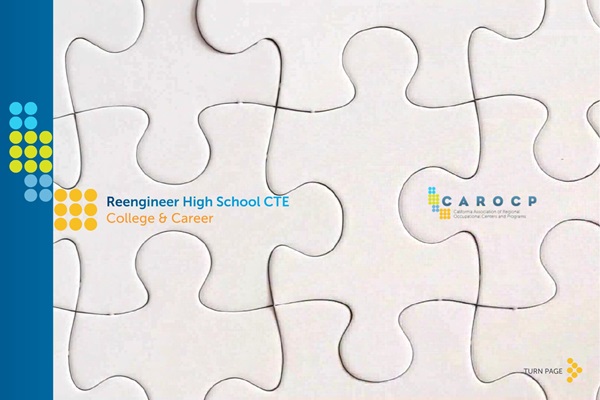Regional Occupational Centers and Programs (ROCPs) are one of the longest-standing forms of postsecondary career preparedness in California. Vocational education has a long history that dates back to the late 1800s, with federal appropriations for program funding that started in 1917 from the passage of the Smith-Hughes Act. The development of ROCPs in California began in the late 1960s, and became a substantial topic in 1976 when laws were passed that outlined the legislative intent, establishment, structures and outcomes of ROCPs (Chapter 1010.1976, sections 52300-52334 of California Education Code). ROCPs have been noted for a number of successful outcomes that are noted below.
The Transition of ROCPs
ROCPs have recently undergone numerous changes within the structure and propose if its programs. With the passage of the Carl D. Perkins Career and Technical Education Act of 2006 many programs had to increase their focus on the academic rigor and achievement of their programs. Program funding was flexed starting in the 2009-10 school year, and most recently the future of categorical funding will be included into the Local Control Funding Formula (LCFF). Districts are responsible for identifying programs and approaches that correspond with eight key priorities of districts, or ten priorities for county offices of education, through their Local Control Accountability Plan (LCAP). ROCP programs are well suited to meet many of the eight state priorities such as student engagement, student achievement, school climate, implementation of common core, and other student outcomes. ROCPs are also well suited to meet the county priority area on the instruction of expelled students.
Learn more about how ROCPs can meet the goals of district LCAPs by viewing the below E-magazine developed by the California Association of Regional Occupational Centers and Programs. (click on image below)

California Association of Regional Occupational Centers and Programs
The Structure of ROCPs
There are currently 71 ROCPs across the state with three distinct structures that consist of single-district programs (7), county-wide programs (35), and Joint Power Agreements (JPAs) between multiple local educational agencies (LEAs) (29). JPA boards are usually made up of existing trustees from each of the LEAs within that geographic area.
The initial intent of the ROCP structure set out to address high levels of unemployment and workforce needs within California through statewide programming to provide high school students (16 and older) and adults with entry-level career and technical training. ROCPs have been very popular with students, and successful in their mission to prepare individuals for the world of work. The California Department of Education acknowledged that “ROP is the most cost effective delivery system for career preparation in California.”
Outcomes
The California Association of Regional Occupational Centers and Programs (CaROCP) reports that ROCPs across the state enroll about 1,757 high school students each year, of which 22 percent of those students are also enrolled in courses that meet UC/CSU admission requirements. About 78 percent of ROCP courses offered are part of a sequenced pathway of classes. Around 42 percent of all courses offered by ROCPs are articulated with local community colleges, and about 22 percent of all classes lead to an industry certification through dual enrollment programs. View the above E-magazine for more information on the promising outcomes of ROCPs.
Instructional Knowledge
ROCP instructors are a valuable asset to ROCP success due to the career-based experience required of teachers before earning a credential. Instructors must hold a Designated Subjects Credential in one or more career areas they may teach. ROCP credentials are different than traditional academic teachers in that they must have three or more years of work experience in the field in which they would like to teach. Learn more about ROCP teacher credentialing by visiting the UC San Diego Extension website.
Partners and Resources:
California Association of Regional Occupational Centers and Programs (CaROCP). CAROCP’s mission is to promote and support the regional delivery of exemplary career education, career development, and workforce preparation that contribute to student academic and career success and to the economic developments of California.
CaROCP Resources and Tools page has a huge list of links to resources, partners, and tools.
Common Core State Standards & Career Technical Education: Bridging the Divide between College and Career Readiness
Statewide ROCPs and contact information.
ROCP Frequently Asked Questions from the California Department of Education
History of Federal CTE Legislation